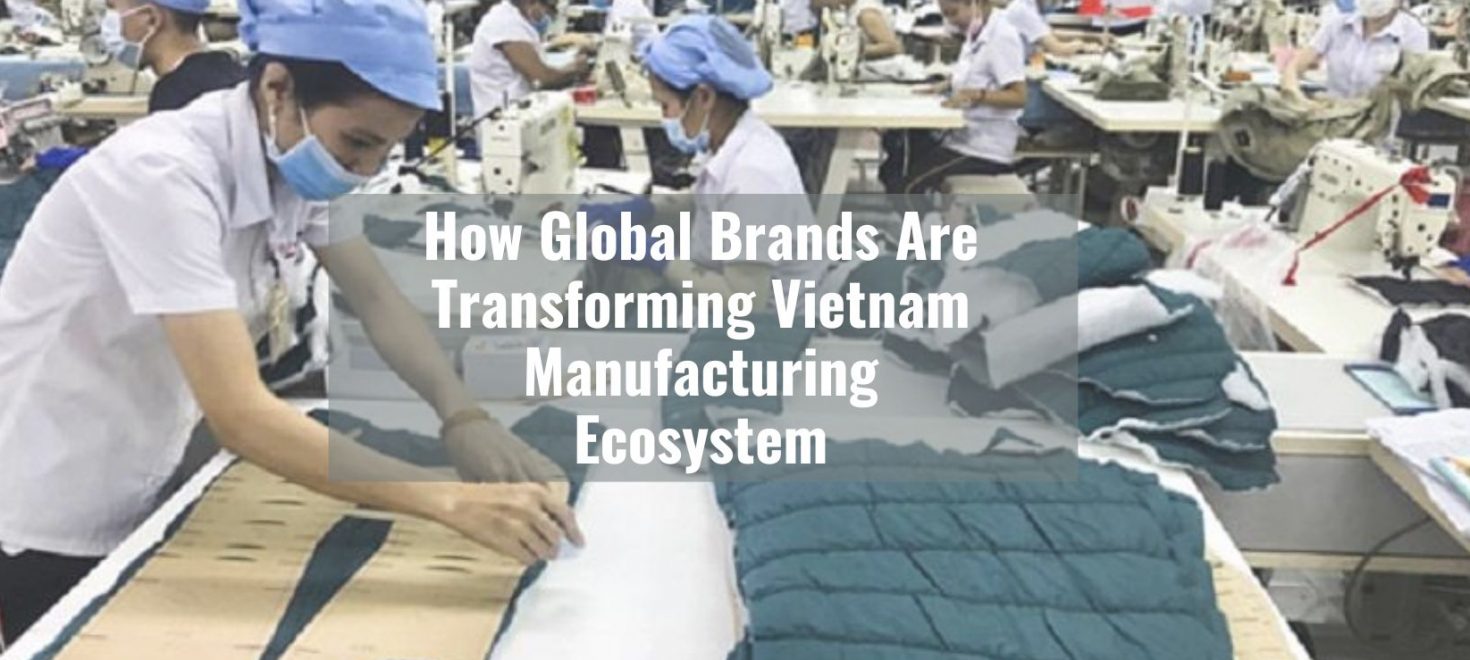Introduction
In recent years, Vietnam has quietly transformed into one of the most sought-after destinations for global apparel and footwear manufacturing. No longer seen merely as a low-cost alternative to China, Vietnam is now a high-value, strategic sourcing base for some of the world’s biggest brands—Nike, Adidas, Uniqlo, Puma, and Lululemon, to name a few. With robust foreign direct investment (FDI), rising automation, workforce skilling, and sustainability mandates, the country’s manufacturing ecosystem is evolving—factory by factory, floor by floor.
This article explores how global investments are reshaping Vietnam’s apparel and footwear industry into a forward-looking, full-package sourcing destination—and what lessons it holds for the rest of Asia.
FDI Influx: Mapping the Investment Boom
Vietnam’s consistent political stability, investor-friendly policies, and access to multiple Free Trade Agreements (FTAs) have attracted over $2.5 billion in annual FDI into the textile and footwear sector over the past few years. Global giants are not only outsourcing production to Vietnam but also investing in long-term infrastructure, technology, and supply chain development.
Nike sources nearly 50% of its global footwear production from Vietnam. Adidas and Puma have both scaled up supplier capacity across southern provinces. Uniqlo has invested in dedicated vendor development programs, while Lululemon and Decathlon are building exclusive partnerships with agile, green-certified factories.
Strategic clusters have emerged in Ho Chi Minh City, Binh Duong, Hai Phong, Bac Ninh, and Da Nang—each supported by export processing zones, logistics parks, and skilled labor corridors. Vietnam’s participation in the Comprehensive and Progressive Agreement for Trans-Pacific Partnership (CPTPP) and the EU-Vietnam Free Trade Agreement (EVFTA) has further enhanced its attractiveness to investors seeking tariff-free access to key markets.
Building Local Ecosystems
Unlike in the past, when Vietnam relied heavily on imported raw materials, brands and suppliers are now building local ecosystems to reduce lead times and increase vertical integration. The country has seen the rise of domestic and joint-venture facilities that manufacture everything from MMF yarns and polyester knits to labels and packaging.
Companies like Hyosung (MMF), YKK (zippers), and Toray (performance textiles) have set up base in Vietnam, enabling full-package manufacturing. Local suppliers are being trained and integrated into global supply chains, while investment in bonded warehousing, port-side facilities, and vendor management teams enhances logistical efficiency.
This localization allows Vietnam to respond faster to buyer demands, manage smaller order quantities, and deliver consistent quality—traits that are critical in today’s fast-moving fashion cycle.
Tech-Driven Manufacturing: A Competitive Advantage
Vietnamese manufacturers are rapidly embracing automation, digital tools, and lean manufacturing to improve efficiency and transparency. From CAD-based pattern making to AI-enabled quality checks and MES-integrated shop floors, the focus is on real-time control, error reduction, and data-backed decision-making.
Factories producing for Adidas and Puma are now equipped with robotic cutting machines, 3D knitting units, and laser-finishing technologies. MES (Manufacturing Execution Systems) track production status live and share updates with brand HQs. ERP systems are integrated with PLM (Product Lifecycle Management) tools, enabling synchronized design-to-delivery operations.
Factory floors are adopting RFID tagging, digital kanban systems, and real-time OEE (Overall Equipment Effectiveness) dashboards. These innovations not only reduce rework and waste but also allow greater flexibility in handling diverse SKUs and short runs—a growing demand in omnichannel retail.
This tech-driven ecosystem not only improves operational KPIs but also strengthens brand confidence in Vietnam’s capacity to manage complex production.
Workforce Development & Upskilling
Behind the machines, there is a growing focus on the people. Global brands are partnering with Vietnamese training institutes, NGOs, and factories to create programs for technical, managerial, and compliance skills.
Workers are being trained in digital sewing machines, pattern grading software, and sustainable manufacturing practices. Supervisors are learning production analytics and lean techniques. Gender-sensitive programs are empowering women on the shopfloor, who form nearly 80% of the workforce in many apparel units.
TVET (Technical and Vocational Education and Training) programs are gaining traction in collaboration with government agencies and private firms. Young professionals are being equipped with design thinking, sourcing knowledge, and advanced merchandising skills to meet global standards.
As automation increases, human skills are being redefined—not replaced. The new workforce is agile, informed, and increasingly tech-enabled.
Sustainability as a Differentiator
Vietnam’s apparel growth is green—and global brands are ensuring it stays that way. Over 150 factories in the country are now LEED-certified. Water recycling, solar energy, biomass boilers, and chemical management under ZDHC protocols are being actively implemented.
Adidas has committed to carbon neutrality in its Vietnamese supply base. Uniqlo encourages its partners to use recycled polyester and reduce water usage per garment. Several suppliers are part of the Higg Index and Bluesign system.
Factories are investing in modular lighting systems, energy management software, and eco-finishing machines. Rainwater harvesting, heat recovery systems, and on-site effluent treatment plants are becoming common.
What’s notable is that sustainability is not seen as a cost, but a competitive edge. It helps Vietnam win business from environmentally conscious buyers and comply with EU and North American regulations. Moreover, ESG compliance is being integrated into procurement scorecards and long-term sourcing decisions.
Case Study: Adidas and Pou Chen Group in Vietnam
Adidas is one of the largest beneficiaries of Vietnam’s transformation. Nearly 40% of Adidas’s global footwear now comes from its partner, Pou Chen Group, operating across Vietnam.
Pou Chen’s flagship factory near Ho Chi Minh City is a model of lean, smart manufacturing. The facility features automated material handling, real-time production dashboards, climate-controlled assembly zones, and ergonomic workstations.
Through close collaboration with Adidas, Pou Chen has reduced lead times by 30%, improved OTIF (On Time In Full) metrics, and enhanced traceability across its supply chain. Employee satisfaction is high due to skill training, fair wages, and digitized feedback systems. Pou Chen’s factory also participates in environmental stewardship programs including zero-discharge wastewater management.
This case shows how brand-factory alignment—backed by technology and values—can create win-win outcomes. It also proves that Vietnam is not just a production base but a strategic partner in innovation.
Challenges & Constraints
Despite the momentum, Vietnam’s apparel sector faces certain headwinds. Labor and utility costs are rising, particularly in the south. Raw material dependency, especially for MMF and synthetic dyes, remains a challenge.
Geopolitical uncertainties like US-China trade friction and compliance scrutiny under the EU-Vietnam FTA create risks. Moreover, competition from emerging destinations like India, Bangladesh, and Indonesia continues to heat up.
Vietnam also faces the challenge of moving beyond basic CMT (Cut, Make, Trim) operations in many factories to true FOB or ODM models. There’s a pressing need to strengthen design and R&D capabilities domestically.
To stay ahead, Vietnam must continue investing in design talent, sustainability, automation, and backward linkage industries. The role of government in enabling green infrastructure and fiscal incentives for innovation will be critical.
Future Outlook: Vietnam’s Role in the Global Apparel Value Chain Vietnam’s role is quickly moving beyond that of a low-cost assembler. With its ability to offer speed, scale, and sustainability—while aligning with brand values—it is well positioned to emerge as a true end-to-end solution provider.
The country is also investing in digital sampling, 3D prototyping, and small-batch agile production, making it attractive for D2C brands and luxury labels. Vietnamese factories are now exploring design services, co-creation platforms, and private label manufacturing to climb further up the value chain.
The next phase of growth will depend on Vietnam’s ability to move into design-to-delivery partnerships, especially in high-margin, fast-fashion, and technical apparel categories. It must also strengthen logistics efficiency to reduce reliance on external ports and sea lanes.
Vietnam’s journey from a cut-and-sew destination to a globally respected, technology-led sourcing hub is nothing short of remarkable. With FDI flowing steadily, sustainability becoming embedded, and brands treating factories as long-term partners—not just vendors—the country’s manufacturing ecosystem is undergoing a silent revolution.
For global buyers seeking reliability, resilience, and responsibility, Vietnam is no longer just an option. It’s a proven strategic partner in the next chapter of global fashion manufacturing.
As the world looks beyond low-cost labor and into smart, sustainable sourcing, Vietnam’s factory floors are setting the new global benchmark—one stitch, one circuit, and one strategy at a time.
At Groyyo Consulting, we partner with visionary apparel manufacturers across Asia to drive the next frontier of operational excellence, sustainable innovation, and future-ready ESG solutions.

Divya Mohan
General Manager (International Business)
divyamohan@groyyo.com


Leave a Comment